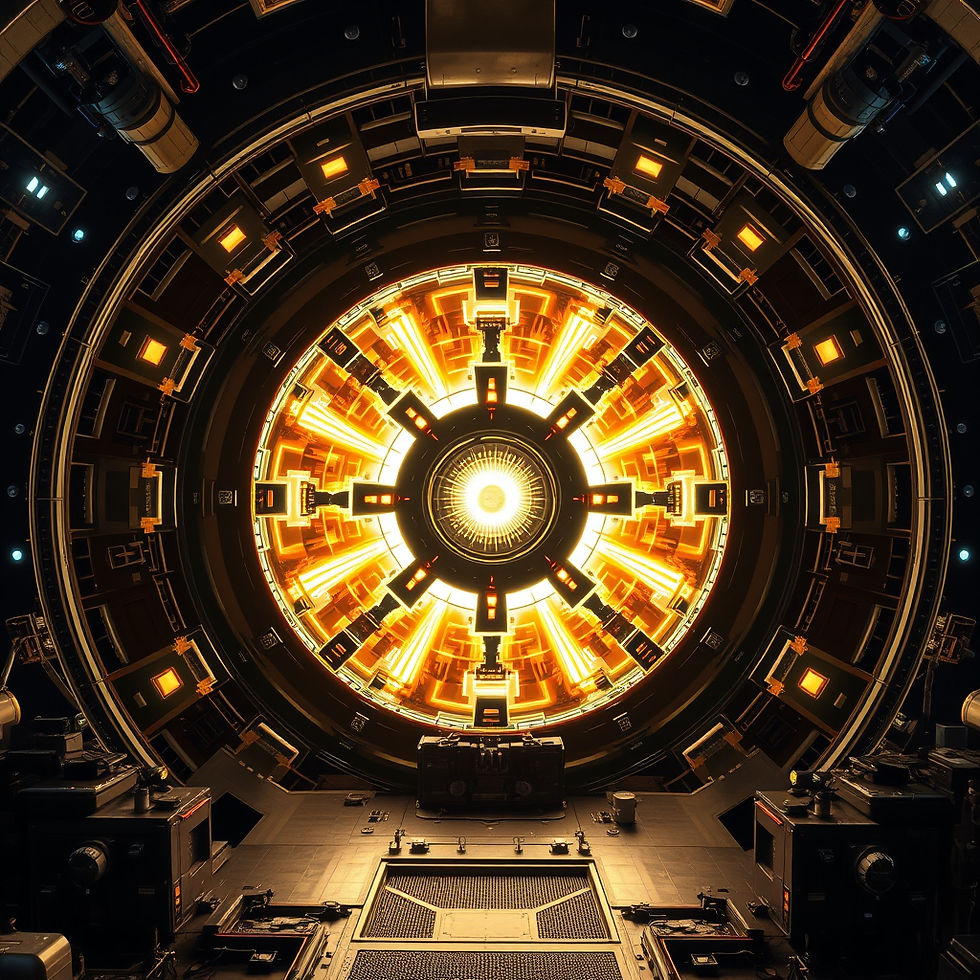Stochastic Electrodynamics Interpretation of Nanowatt Power Extraction from Asymmetric Nanocavities: Validation of Finite Zero-Point Field Interactions
- Douglas Miller
- Aug 17
- 3 min read
Douglas Miller
ZPF Technologies LLC
August 17, 2025
Abstract
Recent experiments by White et al. report nanowatt-scale power output from asymmetric nanocavities, attributed to quantum vacuum fluctuations under Quantum Electrodynamics (QED). This paper reinterprets these results through Stochastic Electrodynamics (SED), demonstrating that the observed preferential electron tunneling and steady-state currents arise from engineered anisotropy in a real, finite zero-point field (ZPF). SED’s framework, extending the Haisch-Rueda-Puthoff model of inertia as ZPF Lorentz drag, resolves QED’s infinities and aligns with empirical data, validating SED as the underlying mechanism. Implications for vacuum engineering, including enhanced propulsion and energy systems, are discussed.
Introduction
Quantum vacuum fluctuations, predicted by quantum field theory, manifest as measurable effects like the Casimir force. White et al. (2025) claim to extract ~37.5 nW from 5 mm × 5 mm chips featuring asymmetric nanocavities with ~10 nm gaps and central pillars, via shielded measurements of capacitive discharges and steady-state currents. Framed in QED, this suggests harvesting virtual particle energy, yet QED’s renormalization masks infinities, overpredicting vacuum density by ~10^{120} compared to cosmological observations (~10^{-9} J/m³).
Stochastic Electrodynamics (SED) offers an alternative: the ZPF as a classical, stochastic electromagnetic field with finite density (~4.96 × 10^{62} J/m³), from which inertia, gravity, and other forces emerge (Haisch et al., 1994; Setterfield, 2013). This paper applies SED to White’s experiments, showing they prove the ZPF’s reality and tunability, enabling practical energy transduction.
Experimental Overview
White’s chips employ asymmetric nanocavities with central pillars, fabricated at nanoscale (~10 nm gaps). Measurements in shielded enclosures reveal 1.5 V at 25 μA (~37.5 nW), from capacitive discharges and steady-state currents. The mechanism involves ZPF-stimulated electron tunneling from cavity walls to pillars, with reduced return probability due to the pillars’ “protected” environment, creating net flow when loaded.
SED Theoretical Framework
In SED, the ZPF is a Lorentz-invariant stochastic field with spectrum ρ(ω) = (ħ ω³ / 2π² c³), yielding finite energy. Inertia emerges as asymmetric ZPF Lorentz drag on accelerating charges (Haisch et al., 1994): F = Γ m a, where Γ scales with ZPF density ρ_ZPF. Extensions posit emergent constants varying with ρ_ZPF (Setterfield, 2013): weaker ancient ZPF yields higher c (~300× modern) and finer α, softening nuclear barriers (α finer ∝ 1/ρ_ZPF).
White’s cavities engineer local ZPF anisotropy: gaps suppress fluctuations (Casimir-like), while pillars densify them, mimicking low-ρ_ZPF regimes. This induces directional Lorentz imbalances, stimulating zitterbewegung-enhanced tunneling: electron probability P_tunnel ~ exp(-Δ / ħ √(2m φ)), where φ softens in densified ZPF. Net current arises from asymmetric drag, I = q N_tunnel (1 - P_return), with P_return reduced in pillar “lagoon.”
SED Explanation of Results
The observed 37.5 nW aligns with SED’s finite ZPF transduction: anisotropic interactions yield E_field ~ √(ρ_ZPF / ε_0), driving ~10^{21} tunnel events/s. Shielded discharges reflect ZPF-induced capacitance C_eff = C_0 (1 + δ_ZPF), where δ_ZPF ~ γ_ZPF - 1 (~0.1-0.4). Steady-state currents prove real ZPF flow, not QED’s virtual pairs—resolving infinities via fractional coupling (~10^{-60} gravitational).
This validates SED: QED predicts zero net energy from virtual infinities; SED enables finite, tunable harvest, proving ZPF as physical medium.
Implications and Conclusion
White’s experiments affirm SED’s unification: inertia/gravity as ZPF-derived, solving cosmological constant via emergent constants. For vacuum engineering, scaling via multilayer cavities could yield watts, enabling ZPE-plasmoid reactors. Future work: integrate with SED extensions for propulsion.

[1] Haisch, B., et al. (1994). Phys. Rev. A, 49, 678.
[2] Setterfield, B. (2013). The Vacuum, Zero-Point Energy, and the Redefinition of Grav-
ity.
[3] White, H., et al. (2025). [Relevant publication].



Comments